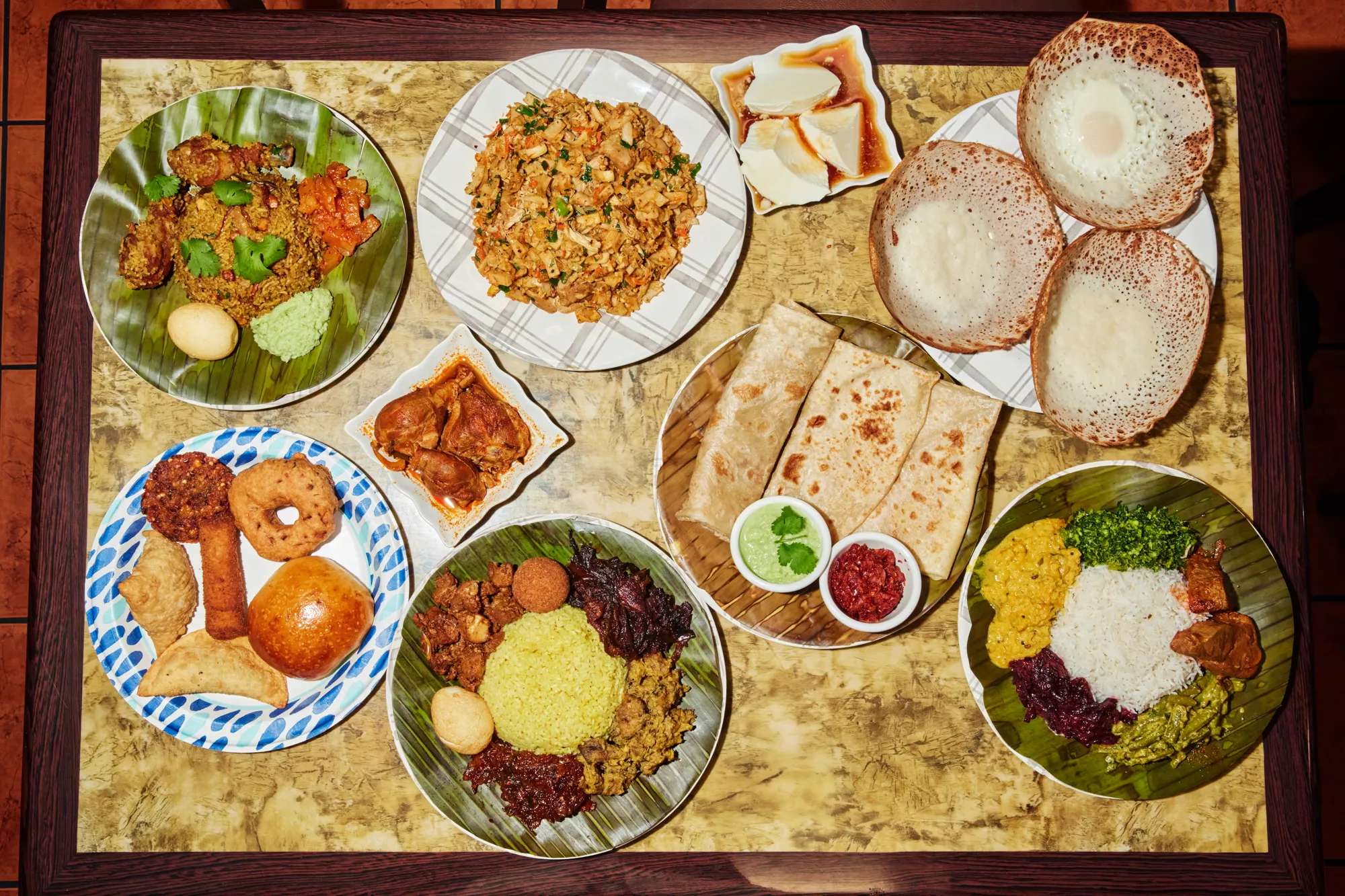Where Does Sri Lankan Food Come From? – By Randika Jayakody & Jerome Perera
Source : Qld Sri Lankan Newsletter – Dæhæna – August 2023
The Sri Lankan diaspora is famous for its food. We often congregate around food and it is an important part of the Sri Lankan identity. So, this month we decided to briefly summarise the origins of some Lankan foods we all cherish.
According to academics and chefs, the community whose culinary impact on Sri Lanka was most pronounced were the Portuguese community of Sri Lanka.
Portuguese nuns immensely contributed to cooking by introducing the holy trinity of oil, onions and garlic and the “themperaadu” technique, which precedes the cooking of many dishes. Cutlets, empanadas, viticulture, the use of vinegar for cooking and preservation (Vinagre became the Sinhala word Vinaakiri). Buns, breads, baked goods such as seenakku, wiskirinja, puhul dosi, custard and cheese (still called Keju in Sri Lanka after the Portuguese word Queijo). The introduction of chilies and a range of produce through the Columbian Exchange are also Portuguese contribution to Lankan food. Regional specialties such as Love cake, Christmas cake, istu (bistek) and pork curries are lingering reminders of the Portuguese contribution to Lankan food.
Dutch Ceylon facilitated food exchange between the Netherlands, its empire and Sri Lanka. Lamprais is a popular example of the confluence of Dutch, Indonesian and Sri Lankan influences. Then there is ginger beer, milk wine, fruit wines, kopi as well as iced kopi. Dutch Christmas delights such as the Breudher (still traditionally eaten with cheese) and other specialties such as Frikkadels, Perkedels and Kokis
are now part of regular Lankan fare.
From Nasi goreng and Mie goreng to Kue Lapis, Malay communities introduced several dishes to Sri Lanka including Dodol, seri kaya, sambals, pickles, and watallappan. A huge amount of Sri Lankan food is undeniably influenced by the historical Southern Indian region. These influences include Kavum, mung kavum, hoppers, string hoppers, appa, indiyappa, achcharus, rotis, pittu, parathas, sambars, dosa, rasam and a range of fried foods.
Then there is aasmi, aggala, mung kavum among a plethora of sweetmeats. Even the venerated Kothu appears to originate in historical Southern India. Research indicates Wanniyala-Aeththo have farmed Kurakkan since time immemorial. Along with the Sri Lankan fondness for game meats like wild boar, deer, and game birds, Kurakkan rotis and kurakkan thalapa represent the oldest types of food cooked in Sri Lanka.
English candies, Vicks, hacks, biscuit puddings, and the ubiquitous style of tea drinking in Sri Lanka (with milk and biscuits) as well as staples such as Marmite, jams and dining habits all remind us of the
long and storied connection between the British isles and our own.
The ancient Middle East has also contributed to Sri Lankan food history. Persian foods such as Falooda enjoyed throughout coastal Sri Lanka, Saruwath and Muscat remind one of the Persian, Moorish, Arab, and Turkik influences on Lankan food. So what is the Sri Lankan food that we all love and cherish? It is the result of millennia of multicultural gastronomic layering.
If you want to learn more, please visit our Youtube channel Mathaya Project and follow us on Facebook at Mathaya Project.
Randika Jayakody & Jerome Perera
Among Randika and Jerome’s many interests is a deep
passion to understand Sri Lankan history and culture.









